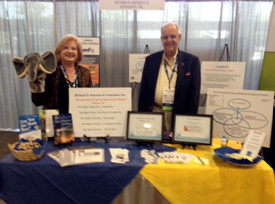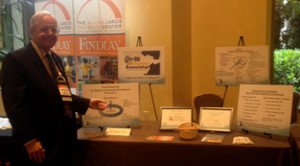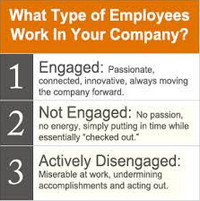A very effective leading indicator relating to occupational safety is to see and keep track of how people are working, and paying attention to details. These are called Safe Acts Audits. We look at a significant number of people doing their day-to-day jobs and keep track of what we see over time.
The way people choose to do a job is very strongly influenced by what is happening in the working environment, the culture—which strongly impacts their thinking. All that is rushing around in their minds (work, family, home, sports, politics) at the point of making a decision and acting on it is really important. Feeling pressured, rushed, bullied, undervalued, disrespected, not listened to, being pushed around by their supervisor, etc. are systems problems that create cloudy thinking resulting in someone getting hurt.
When these poor behaviors, done by individuals, persist over time it is clear that they are tolerated by management; I refer to them as systems problems. We can try to address these each time they arise, but if they keep coming up and the system does not change, they are systems problems.
When we observe people working safely (this is most of the people) we praise their safety efforts, and when we see someone working unsafely we need to pay attention and work together to correct the systems problems that are negatively impacting them. The openness we advocate where it is okay to talk about these things, to challenge decisions, to ask for help, to stop a job if they feel it is unsafe, is called Partner-Centered Safety.
If the ratio of the number of people we observe working safely (most of the people) compared to those working unsafely (very few people) drops, that is we see relatively more people working unsafely, we know that something has changed and must be addressed immediately.
We call this ratio the Safe Acts Index. When the Safe Acts Audits are done 2-3 times a week we can stay close to the current climate and react quickly to a drop in the Index by raising awareness, increasing the number of safety conversations, by helping everyone to become aware of a change and to use extra alertness looking out for and helping each other. In our experience, when the Index drops an injury occurs within the next 2-3 days unless the level of awareness and concern is promptly raised.
 Safety excellence is achieved and sustained one day at a time, day after day.
Safety excellence is achieved and sustained one day at a time, day after day.
In Partner-Centered Safety we can do this together. Give us a call — let’s talk about how you and your team can reap the safety benefits of this unique-and-clearly-successful, focused way to eliminate injuries and incidents in your workplace.
Next month, we’ll discuss the leading indicators for occupational health and process safety management.
 Yes, the elephant that got in the way of having the conversations that matter? You did? Oh, you have one of those too?
Yes, the elephant that got in the way of having the conversations that matter? You did? Oh, you have one of those too? Another paper from an award-winning company showed their outstanding progress in lowering their total recordable injury rate from around 10 to 0.5 through a steady progress of improvements over 10 years. Their work was out of the Newtonian/Cartesian perspective, quite similar to what Mathis and Galloway teach.
Another paper from an award-winning company showed their outstanding progress in lowering their total recordable injury rate from around 10 to 0.5 through a steady progress of improvements over 10 years. Their work was out of the Newtonian/Cartesian perspective, quite similar to what Mathis and Galloway teach. But, the machine view of organizations is the dominant paradigm right now. We direct the people to work in tight procedures. We manipulate them to do things right. We punish them when there is an injury or incidents. We look for root-cause. We think that if we can take things apart and understand the parts that we can understand the whole. Almost all the effort is engaged in doing things TO the people as if they were just interchangeable parts of a machine. Most people push back against authority in this paradigm. This is a win/lose environment.
But, the machine view of organizations is the dominant paradigm right now. We direct the people to work in tight procedures. We manipulate them to do things right. We punish them when there is an injury or incidents. We look for root-cause. We think that if we can take things apart and understand the parts that we can understand the whole. Almost all the effort is engaged in doing things TO the people as if they were just interchangeable parts of a machine. Most people push back against authority in this paradigm. This is a win/lose environment. People are often reluctant to speak up in these negative environments. Ideas for improvement never surface. New employees are negatively influenced and led astray. Supervisors have a very rough time getting the people to do their work properly. Grievance rates are high and much time is wasted needlessly because these are not addressed at an early stage.
People are often reluctant to speak up in these negative environments. Ideas for improvement never surface. New employees are negatively influenced and led astray. Supervisors have a very rough time getting the people to do their work properly. Grievance rates are high and much time is wasted needlessly because these are not addressed at an early stage. For most managers putting production first can be quite subtle with messages like:
For most managers putting production first can be quite subtle with messages like: As managers go into their workplaces, walking around watching, listening and sharing with true authenticity and interest, trust and interdependence build. People learn to open up, to share, to point out possible areas for improvement, and to realize that they are a critical part of the whole safety effort. A huge, positive shift in the safety culture occurs. The people close to the actual, physical work are often in the best position to see potential hazards that are not visible to the managers. The managers often need to push to meet production schedules so it is easy for them to miss these potential hazards. Therefore, having the active help of those closest to the work is an important piece of the total safety effort. This is one way we avoid disasters like the Deepwater Horizon explosion and fire.
As managers go into their workplaces, walking around watching, listening and sharing with true authenticity and interest, trust and interdependence build. People learn to open up, to share, to point out possible areas for improvement, and to realize that they are a critical part of the whole safety effort. A huge, positive shift in the safety culture occurs. The people close to the actual, physical work are often in the best position to see potential hazards that are not visible to the managers. The managers often need to push to meet production schedules so it is easy for them to miss these potential hazards. Therefore, having the active help of those closest to the work is an important piece of the total safety effort. This is one way we avoid disasters like the Deepwater Horizon explosion and fire. Most of us working in safety have been brought up to see organizations as if they are machine-like. This thinking goes all the way back to Descartes (1596-1650) and Newton (1642-1727). We use reductionist approaches to try to understand them. We seek cause/effect relationships. We use linear processes for training and the like, prescribing answers and doing things TO the people. We work on this part or that part trying to fix the whole thing.
Most of us working in safety have been brought up to see organizations as if they are machine-like. This thinking goes all the way back to Descartes (1596-1650) and Newton (1642-1727). We use reductionist approaches to try to understand them. We seek cause/effect relationships. We use linear processes for training and the like, prescribing answers and doing things TO the people. We work on this part or that part trying to fix the whole thing.  Lots of critical knowledge, experience and skills will be lost. Younger people, who have grown up in an electronic world of texting and games, will replace these people. Many are out of shape and bordering on being over weight; some are developing diabetes. This will pose significant challenges to employers and the need to work safely and well.
Lots of critical knowledge, experience and skills will be lost. Younger people, who have grown up in an electronic world of texting and games, will replace these people. Many are out of shape and bordering on being over weight; some are developing diabetes. This will pose significant challenges to employers and the need to work safely and well. Most of the safety people I’ve come to know approach organizations as if they are mechanical things to manipulate. Organizations are structured in functions. Knowledge is structured in pieces. People are narrowly skilled. Motivation is based on external factors. Information is shared on a need to know basis. Change is a troubling problem. People work in prescribed roles seeing only their part of the work. If change is needed people are moved around like chairs. Training is provided in abundance. Safety programs are set up as step-by-step processes where things are arranged in a prescribed sequence.
Most of the safety people I’ve come to know approach organizations as if they are mechanical things to manipulate. Organizations are structured in functions. Knowledge is structured in pieces. People are narrowly skilled. Motivation is based on external factors. Information is shared on a need to know basis. Change is a troubling problem. People work in prescribed roles seeing only their part of the work. If change is needed people are moved around like chairs. Training is provided in abundance. Safety programs are set up as step-by-step processes where things are arranged in a prescribed sequence. 




